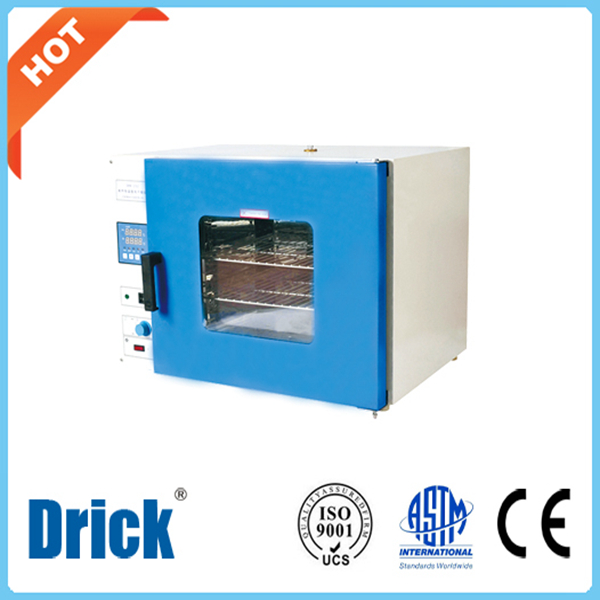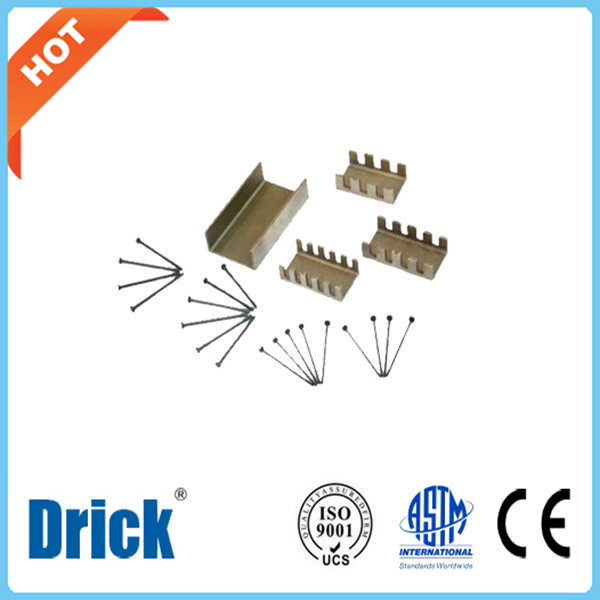DRK-FFW Reverse bend tester
Short Description:
Introduction This testing machine is mainly used for reverse bending tests of metal plates, to test the performance of the metal plates to withstand plastic deformation and the defects displayed during repeated bending. Test principle Clamp a sample through a special tooling and clamp it in two jaws of specified size, press the button, and the sample will be bent 0-180°. After the sample is broken, it will automatically stop and record the number of bending. According to the different require...
Introduction
This testing machine is mainly used for reverse bending tests of metal plates, to test the performance of the metal plates to withstand plastic deformation and the defects displayed during repeated bending.
Test principle
Clamp a sample through a special tooling and clamp it in two jaws of specified size, press the button, and the sample will be bent 0-180°. After the sample is broken, it will automatically stop and record the number of bending.
According to the different requirements of customers, special fixtures are equipped, and other metal bending tests can be done.
Technical parameters
|
Item |
Parameters |
|
Sample length |
150-250mm |
|
Bending angle |
0-180°(Planar bending) |
|
Counting range |
99999 Times |
|
Display |
PC, Touch screen display and control, automatic recording of times |
|
Bending speed |
≤60rpm |
|
Motor Power |
1.5kw AC servo motors and drives |
|
Power supply |
220V,50Hz |
|
Dimension |
740*628*1120mm |
|
Frame weight |
220Kg |
Structural features and working principle
This testing machine is mainly composed of a host computer and an electrical measurement and control system. It adopts mechanical transmission, applies test torque to repeatedly bend the sample, and uses photoelectric switches to detect the number of bending tests. After the sample breaks, it will stop automatically, the pendulum rod will be reset, the touch screen will automatically display, and the number of bending tests will be recorded.
1.Mainframe
The mainframe is driven by an AC servo motor through a belt pulley to drive the worm gear pair to decelerate, and then a crank-swing rod mechanism drives a cylindrical gear transmission. The cylindrical gear drives the pendulum rod to make a 180° rotation, so that the guide sleeve on the pendulum rod drives the sample to make 0 -180° bend to achieve the purpose of the test. The cylindrical gear is equipped with a counting device, and the photoelectric switch collects a signal every time the sample is bent, so that the purpose of counting is achieved.
After the test, if the pendulum bar does not stop to the middle position, press the reset button, and another photoelectric switch collects the signal to restore the pendulum bar to the middle position.
The swing rod is equipped with a shift rod, and the shift rod is equipped with guide sleeves with different inner diameters. For samples of different thicknesses, the shift rod is adjusted to different heights and different guide sleeves are used.
Below the pendulum rod, there is a sample holding device. Manually rotate the lead screw to move the movable jaw to clamp the sample. For specimens with different diameters, replace the corresponding jaws and guide bushes (there are marks on the jaws and guide bushes).
2.Electrical measurement and control system
The electrical measurement and control system mainly consists of two parts: strong current and weak current. The strong current controls the AC servo motor, and the weak current part is divided into three channels: one route photoelectric switch collects the bending times signal, which is pulse-shaped to the decoder and sent to the computer for display and save; The other route photoelectric switch controls the resetting of the swing lever. When the signal is received, the AC servo motor is stopped. At the same time, after receiving the stop signal of the AC servo motor in the last way, the AC servo motor is reversely braked, so that the swing rod is stopped to a proper position.
Working conditions
1. At room temperature 10-45℃;
2. Horizontal placement on a stable basis;
3. In a vibration-free environment;
4. No corrosive substances around;
5. No obvious electromagnetic interference;
6. The fluctuation range of the power supply voltage does not exceed the rated voltage 220V±10V;
7. Leave a certain amount of free space around the testing machine.


SHANDONG DRICK INSTRUMENTS CO.,LTD
Company Profile
Shandong Drick Instruments Co., Ltd, is mainly engaged in the research and development, manufacturing and sales of testing instruments.
The company established in 2004.
Products are used in scientific research units, quality inspection institutions, universities, packaging, paper, printing, rubber and plastics, chemicals, food, pharmaceuticals, textiles, and other industries.
Drick pays attention to talent cultivation and team building, adhering to the development concept of professionalism, dedication.pragmatism, and innovation.
Adhering to the customer-oriented principle, solve the most urgent and practical needs of customers, and provide first-class solutions to customers with high-quality products and advanced technology.











